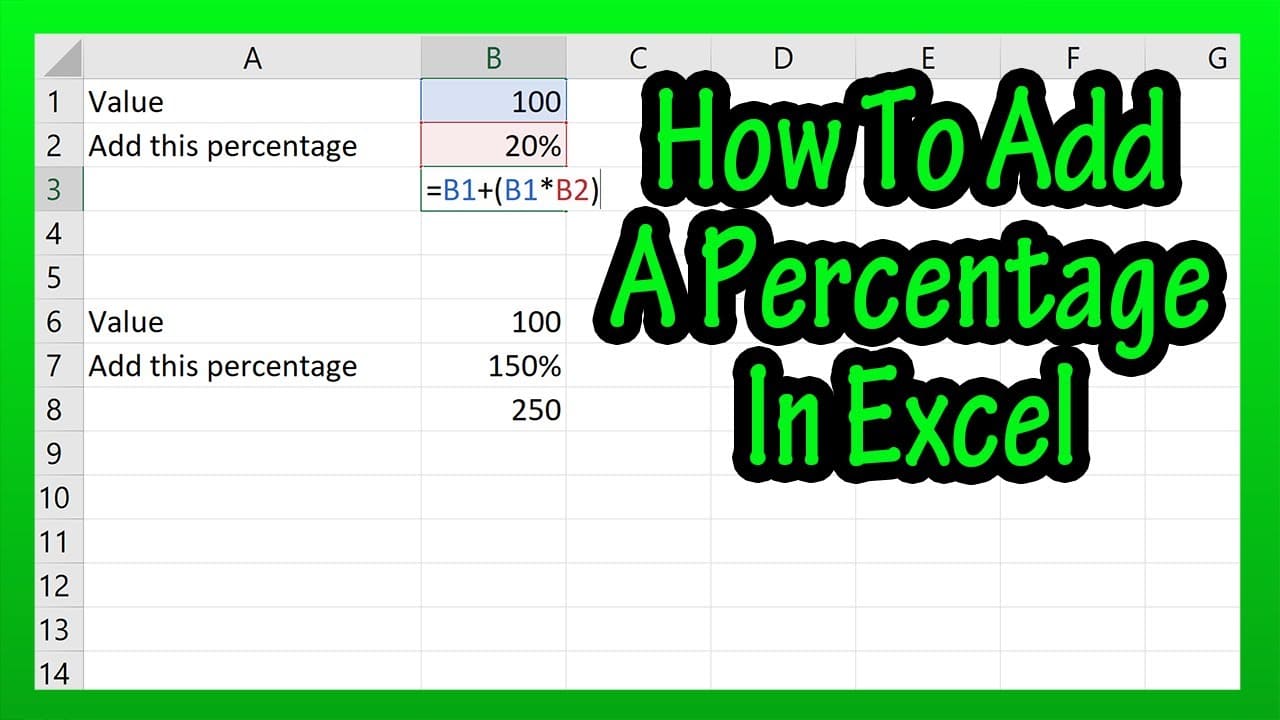How to Use the Percentage Formula in Excel: A Complete Guide

Why Percentages Matter in Excel
Let’s start with the basics: why should you even bother using percentages in Excel?
Percentages are used to represent proportions, changes, comparisons, and more. For instance:
- Tracking monthly sales
- Calculating discounted prices
- Understanding student performance
- Estimating market share shifts
When you're in an Excel Course, you'll see how commonly this feature is used across departments—finance, marketing, HR, operations, and even in personal budgeting.
Understanding the Percentage Formula in Excel
Let’s cut to the chase. The basic percentage formula in Excel is:
= (Part / Total) * 100
But here’s the beauty of Excel—you don’t always need to multiply by 100 manually. If a cell is formatted as a percentage, Excel will handle it for you.
For Example:
If you have:
A1 = 50 (Part)
B1 = 200 (Total)
Then the formula in C1 would be:
= A1 / B1
Once you format C1 as a percentage, Excel will automatically display 25%.
That’s it. It’s that simple.
How to Format Cells as
Many beginners forget this step and end up confused by decimals. To fix that:
- Select the cell or range you want to format.
- Right-click and choose “Format Cells.”
- Click on “Percentage.”
- Choose the number of decimal places (usually 0 or 2).
Done! Excel will now show 0.25 as 25%, and so on.
This is something you’ll often get drilled into you during an Excel Course—knowing where to click and what to format is half the battle.
Common Use Cases of the Percentage Formula in Excel
Let’s explore some real-world examples where using the percentage formula can save time and headaches.
1. Calculating Discounts
Say you're managing an online store and want to calculate 20% off a product that costs ₹1,500.
= 1500 * 20%
or
= A1 * B1
(assuming A1 is ₹1,500 and B1 is 20%)
2. Finding Percentage Increase or Decrease
If last month’s revenue was ₹50,000 and this month it’s ₹60,000, the growth is:
= (New - Old) / Old
= (60000 - 50000) / 50000
Excel version:
= (B1 - A1) / A1
Just format the result as a percentage, and you’ll see the growth rate: 20%.
3. Exam or Grade Percentages
If a student scores 85 out of 100:
= 85 / 100 → 0.85 → 85%
Another day, another Excel use case simplified.
Pro Tips for Using Percentage Formula in Excel
While the formula itself is simple, there are some tips you’ll pick up during an Excel Course or from experience:
Avoid Hardcoding: Always refer to cell references instead of typing values directly. It makes formulas reusable.
Use Absolute References (with $): When copying formulas across cells, lock reference cells with $, like $A$1, to keep them fixed.
Watch for Extra Spaces or Text: Non-numeric data can break your formula. Excel reads cells literally.
Combine with IF statements: You can build logic like:
=IF(A1/B1 > 0.5, "Above Average", "Below Average")
These tips may not seem vital at first, but they’re the small things that make you an Excel wizard over time.
Trouble shooting Common Errors
Let’s be honest—Excel can be picky. You might follow every step and still end up with a #DIV/0! or something worse. Here’s what to look out for:
Dividing by Zero
If your denominator is zero, Excel can’t calculate. Use:
=IF(B1=0, "", A1/B1)
Wrong Formatting
If you see 0.25 instead of 25%, just reformat the cell to "Percentage."
Copy-Paste Issues
Formulas sometimes break when you copy cells between sheets. Double-check references when pasting.
When to Use Percentage Formula in Professional Work
If you're working in sales, marketing, finance, or product management—or planning to—percentages are a daily tool.
Examples:
In Sales: Track conversion rates, year-over-year performance.
In Finance: Calculate loan interest, returns on investment.
In HR: Assess attrition rate, performance improvement.
In Academics: Calculate attendance or grade percentage.
That’s why a good Excel Course never skips teaching the percentage formula. It’s one of those life skills in a spreadsheet format.
Using Excel’s Built-In
If you’re feeling overwhelmed, don’t worry—Excel has features to make life easier:
Quick Analysis Tool
Select data, click the Quick Analysis icon, and choose “Totals” → “% of Total.”
Pivot Tables
Perfect for calculating percentages in large datasets.
Conditional Formatting
Use it to highlight cells that exceed a certain percentage—great for dashboards.
These tools are often covered in the intermediate to advanced modules of an Excel Course. But even beginners can start experimenting.
Final Words
Why You Should Master the Percentage Formula in Excel
At the end of the day, Excel is more than just rows and columns—it’s a decision-making engine. Understanding how to use the percentage formula in Excel isn’t just about math. It’s about insights, clarity, and making better choices with your data.
If you're on the fence about taking an Excel Course, think of how much time and confusion you can save by learning the right way to handle data. Whether you’re applying for a job, running a business, or managing your own finances, mastering this small but mighty formula pays off—literally and figuratively.
Frequently Asked Questions (FAQs)
Q1: What is the basic percentage formula in Excel?
A: The basic formula is:
= (Part / Total)
Format the cell as a percentage, and Excel will automatically convert the result (e.g., 0.25 becomes 25%).
Q2: Do I need to multiply by 100 to get a percentage in Excel?
A: No. If the cell is formatted as a percentage, Excel automatically multiplies by 100 behind the scenes.
Q3: How do I format a cell as a percentage?
A: Right-click the cell → SelectFormat Cells → Choose Percentage → Set the number of decimal places (usually 0 or 2).
Q4: How can I calculate the percentage increase or decrease between two numbers?
A: Use this formula:
= (New - Old) / Old
Format the result as a percentage to see the increase or decrease.
Q5: Why am I seeing 0.25 instead of 25%?
A: Your cell is likely formatted as a number instead of a percentage. Simply reformat it using:
Format Cells → Percentage
Q6: What does the #DIV/0! error mean in percentage formulas?
A: This error occurs when you're trying to divide by zero. Fix it with this logic:
=IF(B1=0, "", A1/B1)
Q7: Can I use percentages in conditional formatting?
A: Yes! Select your cells → Go to Home → Conditional Formatting → Create rules based on percentage thresholds (e.g., highlight values over 80%).
Q8: Is it better to use cell references instead of typing numbers directly into formulas?
A: Yes. Using cell references makes your formulas more dynamic and easier to update. Example:
=A1/B1 is better than =50/200
Q9: What are absolute references and why are they important in Excel percentage formulas?
A: Absolute references (like $A$1) lock a cell so it doesn’t change when copying the formula across multiple cells. This is helpful when one part of the formula should stay constant.
Q10: Are there any Excel tools that can help with percentage calculations automatically?
A: Absolutely! Use:
- Quick Analysis Toolfor fast % of totals
- Pivot Tables to summarize percentage data
- Formulas + Formatting to customize based on your logic


























